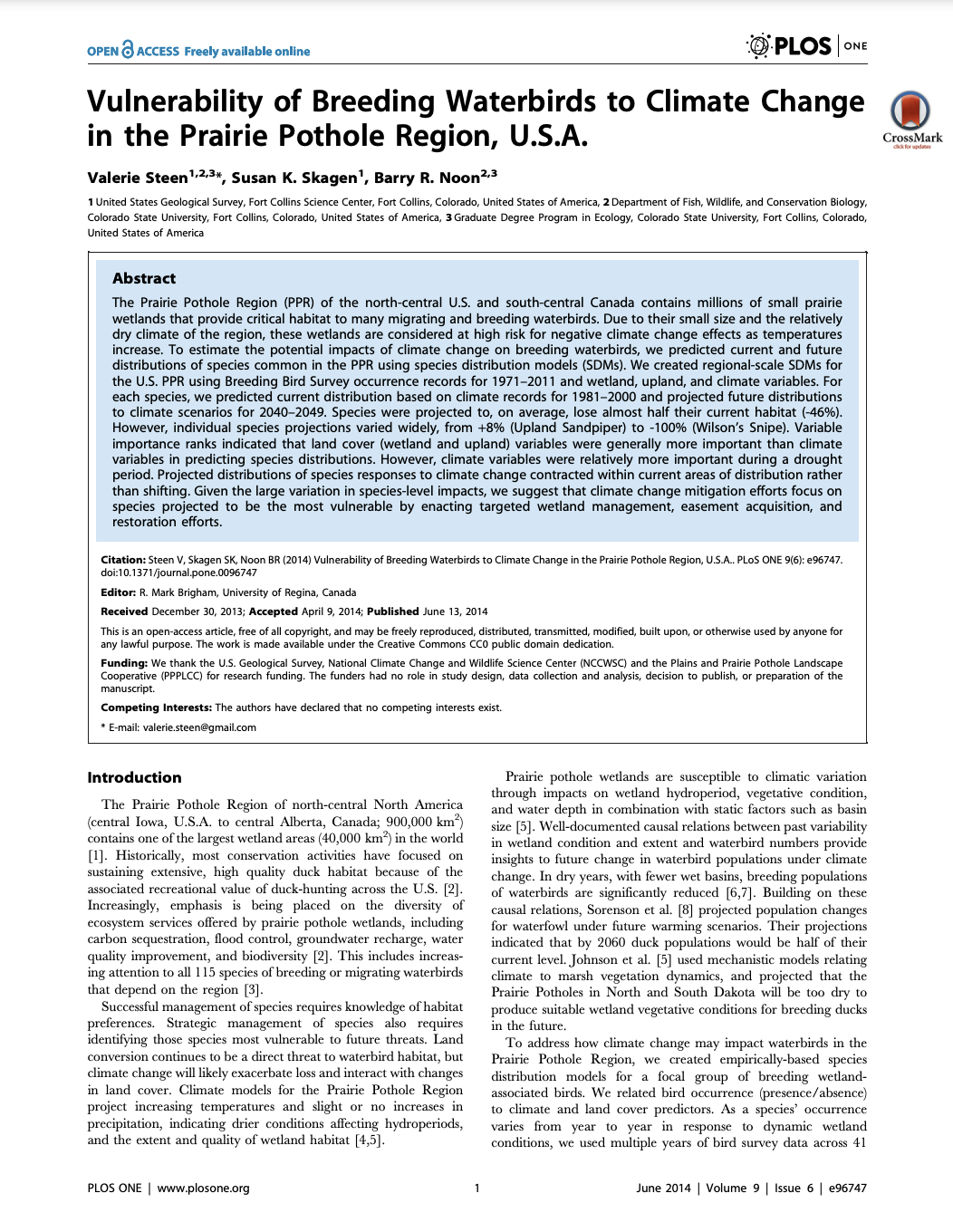Vulnerability of Breeding Waterbirds to Climate Change in the Prairie Pothole Region, U.S.A.

Posted by
CAKE TeamPublished
Abstract
The Prairie Pothole Region (PPR) of the north-central U.S. and south-central Canada contains millions of small prairie wetlands that provide critical habitat to many migrating and breeding waterbirds. Due to their small size and the relatively dry climate of the region, these wetlands are considered at high risk for negative climate change effects as temperatures increase.
To estimate the potential impacts of climate change on breeding waterbirds, we predicted current and future distributions of species common in the PPR using species distribution models (SDMs). We created regional-scale SDMs for the U.S. PPR using Breeding Bird Survey occurrence records for 1971–2011 and wetland, upland, and climate variables. For each species, we predicted current distribution based on climate records for 1981–2000 and projected future distributions to climate scenarios for 2040–2049.
Species were projected to, on average, lose almost half their current habitat (-46%). However, individual species projections varied widely, from +8% (Upland Sandpiper) to -100% (Wilson's Snipe). Variable importance ranks indicated that land cover (wetland and upland) variables were generally more important than climate variables in predicting species distributions. However, climate variables were relatively more important during a drought period. Projected distributions of species responses to climate change contracted within current areas of distribution rather than shifting.
Given the large variation in species-level impacts, we suggest that climate change mitigation efforts focus on species projected to be the most vulnerable by enacting targeted wetland management, easement acquisition, and restoration efforts.
Citation
Steen V., Skagen S.K., Noon B.R. (2014). Vulnerability of Breeding Waterbirds to Climate Change in the Prairie Pothole Region, U.S.A. PLOS ONE, 9(6): e96747. https://doi.org/10.1371/journal.pone.0096747.


